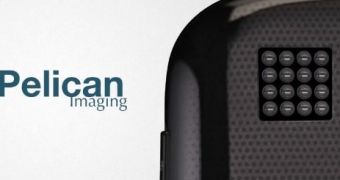Smartphone cameras have come a long way in the last few years and the most recent one offer customers enhanced shooting possibilities as well as better image quality than ever before.
Although today's smartphone camera features are great, there's always place for technological advancements to take them even further. Recently, we presented Qualcomm's latest Snapdragon 805 image processor that can capture multiple images of different focal lengths in a very short period of time and stitching them together to create a photo where everything is in focus.
In a recent interview for GeekBeatTV, Chris Pickett, chief executive at Pelican Imaging, announced a revolutionary new 16-lens light field camera designed to be used with future mobile devices (smartphones, tablets etc.).
Pelican's solution is based on an array camera that is 50 percent thinner than the current generation of smartphone cameras. Although it's under 3mm thick, the unit packs no more than 16 smaller cameras that are able to take one image each, capturing 16 different points of view at the same time and fusing them together into a high-resolution photo or video.
In the video below you can see how this camera really works, as Chris demonstrates how you can use selective focus on any part of the image without affecting the entire photo. Moreover, Pelican's camera unit also captures a full depth map that records information about each object's position and can help you easily determine the distance between two objects with a simple finger swipe on your smartphone's touchscreen.
For example you can choose to keep the foreground and background in focus, while the middle of the frame remains out of focus completely. This results in an abnormal photo, but if this is the result you are looking for, Pelican's camera will do the trick.
In addition to that, using the camera's depth map, a smartphone could also create a 3D image of the object you have photographed. At the same time, the camera can also combine the images captured by each lens to create HDR videos in real time.
Pelican's 16-lens camera will be used in future smartphones starting Q1-Q2 2015.

 14 DAY TRIAL //
14 DAY TRIAL // 